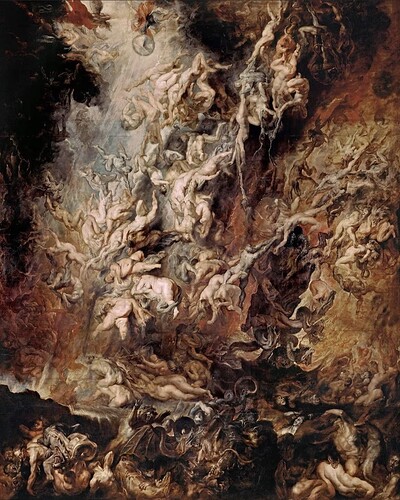The Fall of the Damned by Peter Paul Rubens, 1620. The painting depicts a cascade of bodies being hurled downward by the Archangel Michael (you can find him on the upper left side wearing a blue tunic and a red cape while holding a shield and some sort of weapon) with the help of other angels. Other bodies of the damned are dragged down by demons, who claw and pull at them in ways that would normally tear apart the human.
An initial glance makes it seem like a simple painting, which depicts sinners being cast into the underworld. However, another take is that the painting actually reveals the moment Lucifer is banished from heaven alongside all the angels that backed him. Those angels have lost their wings and are gradually being transformed into demons and evil spirits, forever banished for their beliefs.
In 1959, a supposed philosopher by the name of Walter Menzl threw acid on the painting in order to generate interest around a book (about utopian universal peace) he had written that no one wanted to publish. He was ordered to pay 80,000 Deutschmarks, which he could not pay, so he ended up spending 3 years in prison. His book was never published, and the painting was restored and is currently at the Alte Pinakothek in Munich, Germany.
Menzl was quoted as saying that he did not directly destroy the work, but the acid “relieves one from the work of destruction”.

